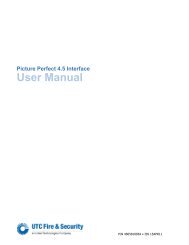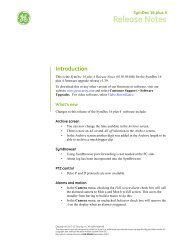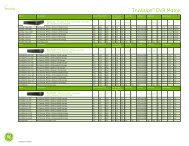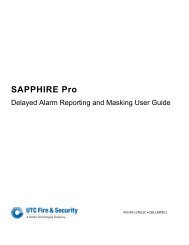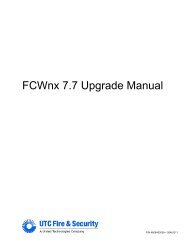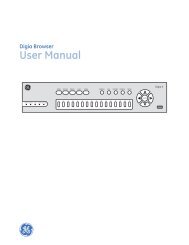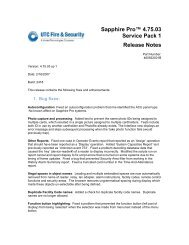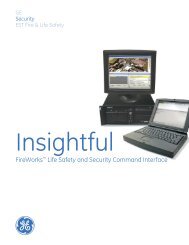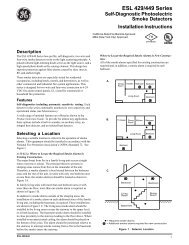Picture Perfect 4.6 Enterprise Edition User Manual - UTCFS Global ...
Picture Perfect 4.6 Enterprise Edition User Manual - UTCFS Global ...
Picture Perfect 4.6 Enterprise Edition User Manual - UTCFS Global ...
Create successful ePaper yourself
Turn your PDF publications into a flip-book with our unique Google optimized e-Paper software.
54<strong>Picture</strong> <strong>Perfect</strong> <strong>4.6</strong> <strong>Enterprise</strong> <strong>Edition</strong><strong>User</strong> <strong>Manual</strong>The syscdr database is added to the installation. This database resides in the entrepdbs DB spaceand is required by the ER technology to administer the replication in every participant server.The table currseq (server_id int, table_name varchar(64), currseq int) is added to the installation.This table is populated with default records that have the server_name of that server, records foreach of the global tables that will have sequences (excluding history tables), and the value of currseqset to 0 or max(id) if there are records already on that host for that table.The table host_time (id int, hostname varchar(64), utc_timestamp date_time) is added duringnetlan/subhost installation. This table is populated with the current UTC time on each server for itself.The subhost records are replicated to the nethost. So, the host_time table on the subhost has one(1) record, and on the nethost the host_time table has a record for itself and records for all subhosts.The directories /ats (Aborted Transaction Spooling) and /ris (Row Information Spooling) arerequired by the table replicate definition which maintains log data about failed replicated records.The /ats and /ris directories are created in the <strong>Picture</strong> <strong>Perfect</strong> /ppbackup directory that isdefined in the Parameters UI (system_config table).The /ppbackup directory must have reserved enough space to keep log data from the /ats and/ris directories in addition to the recommended 25 to 35 Gb (additional minimum suggested for ERis 5 GB).ER configures and manages all servers in the installation by group names to allow space for serveraliases, server names for encrypted database communication or disaster/recovery servers, as inbackup/secondary (High-Availability Data Replication (HDR) servers.In ER configuration, the nethost is referred to as “nethost_1”. The first subhost is referred to as“subhost_2”, the second as “subhost_3”, and so on. The suffix number of the nethost or subhostrefers to the “id” of the corresponding server in the host table in the database.<strong>Enterprise</strong> Replication scriptsWith the introduction of ER, several existing installation, database management and monitoringscripts/tools have been modified and new tools have been introduced.The following sections describe new and modified ER monitoring and management tools:• ercmd.sh• hostconfig• cdr_er_cleanup.sh



